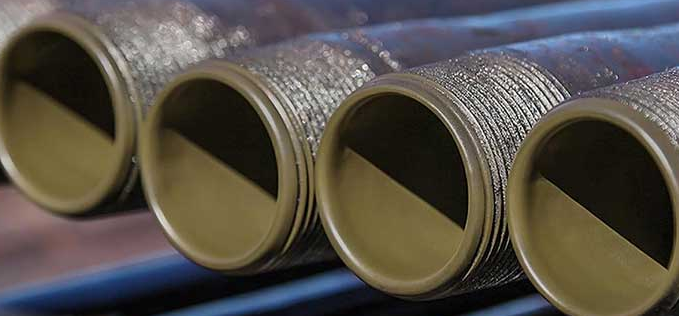Whaty Are 3 Rubber Coating Most Frequently Used To Mold Making from LeonN's blog
Ask yourself, how can I create molds or models before you start creating molds or casts? Then I apply rubber silicone or rubber polyurethane. The benefits and drawbacks of every moulding material choice and each product line itself has different possibilities (for example, there are more than 30 separate options in the polyurethane rubber series). We concentrated here on three types of rubber most frequently used to mold making and most suitable: polyurethane rubber casting, silicone rubber tin hardening condensation rubber and the silicone platinum hardening addition.
Advantages and drawbacks of every rubber layer
Here we explain briefly the benefits and drawbacks of various rubber coatings for mold production.
polyurethane rubber
Profit
Higher strength decrease (tensile/extension) cost.
Wide range of varying hardness (Shore A)
Shortcoming
The releasing agent must be properly administered (opaque)
Moisture sensitive (liquid / form processing)
Mold casting technique
Spray
Spray brush
SG silicone c-sil products - silicone cured tin rubber (condensing) advantage
No release agent necessary (self releasing)
Excellent chemical strength.
Lack of typical cost
Cure decline (~1 percent)
Curated rubber's short shelf lives (shrinkage / hardening)
Method of producing abrasive tools
casting
brush
Eurosil silicone goods - Platinum silicone rubber toughened (silicone)
Advantage
Don't release agent (self release)
No shrinking after treatment
Long lifetime of vulcanized rubber (mold)
Average resistance to chemical
Lack of higher costs
To prevent (test) the treatment of particular surfaces
Casting of technique
Paint brush
What casting substance is utilized for the mold's production?
Production of concrete (prefabrication)
In many instances, polyurethane rubber is very efficient for the preparation of concrete items such as stone bars, tiles, wall decorations, panels, lamps, tops, chairs, benches or other furniture and decorated concrete castings. In certain instances, when pouring concrete into a mold, mold release agents or release agents are not needed, although this relies in great part upon the composition and additives of the concrete casting, such as the kind of GFRC concrete. Polyurethane rubber hardness varies from A20 shore to D45 shore (flexible). Because of the broad variety of selections for coastline 20, it is extremely soft and flexible, up to 90 or even the flexible shore D 45.
Our Poly 74 range is commonly utilized in small and undercut models (difficult to demould from molds). Think about many decorative and decorative things. The Poly 75 series is a kind of rubber polyurethane that may be extensively utilized in big and large manufacturing processes. The Poly 75 series is increasingly difficult to sustain big and heavy castings. Both the poly 74 series and the cast rubber 75 series are known as HS (high strength) rubbers, enabling a mass manufacturing.
C silicon
C silicon is an excellent material that can be used many times to make reasonably inexpensive and easy molds. Small shrinkages are taken into consideration during and after curing. The greatest benefit is that the releasing agent is not needed in many situations.
Eurosil silicone
Eurosil silicone is recommended for rapid silicone curing that needs great detail and does not include a release agent for the reproduction of medium volume. A rubber of extremely good quality, which gives much detail in the model. The GFRC (glass fiber reinforced concrete/glas fiber reinforced concrete type) goods are also extensively utilized because of their self-release characteristics and their low hardness, simple to release on the shore.
Gypsum or wax
Polyurethane rubber mold is a popular option for casting gypsum and wax. For this reason we utilize the softer rubbers in the product line: Poly 74 Series and POLYGEL ® Series, and euro cast silica gel. SG c-sil may also be an incorrect and single copy solution.
Resins of polyurethane and polyester
Silicone rubber is often used in casting forms. The greatest benefit is that no mold release agent is required for each casting. With the use of silica gel, for example, the replication precision is even less than 1 micron. Appropriate use may be made of silicone rubber, such as epoxy resin, polyester and polyurethane casting. Please utilize our polyurethane 2300 and other release agents when contemplating polyurethane rubber coating.
Resin of epoxy
Silicone rubber mold for pouring epoxy resin may be a suitable option, since no release agent is required. Due to the corrosive hardness of the epoxy resin, however, the silicone mold is worn rapidly such that many castings can only be copied. Polyurethane rubber is thus often used in mold manufacturing and an appropriate release agent (such as polyease) 2300 is employed.
Sparkling polyurethane
Silicone rubber is generally suggested for the production of polyurethane casting moulds. This is because silicone rubber molds have a lifetime longer than polyurethane rubber molds, and no release agent is required. We also utilize friction blocks like ABS as closed die. These may then be processed using a mold release agent. These mold types are often utilized for mass manufacturing or big items.
The majority of such materials may be moulded using polyurethane or silica gel; generic suggestions are given above depending on the preferences most frequently employed. You may choose another alternative based on the following areas.


The Wall